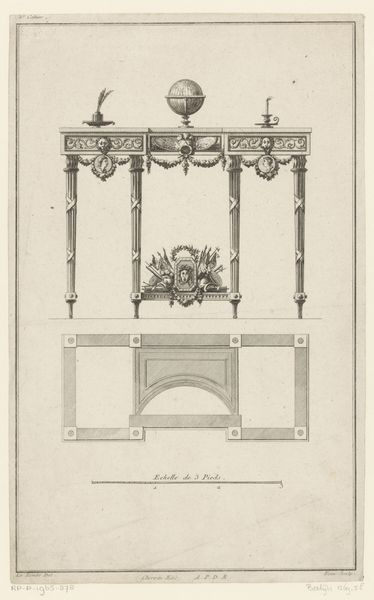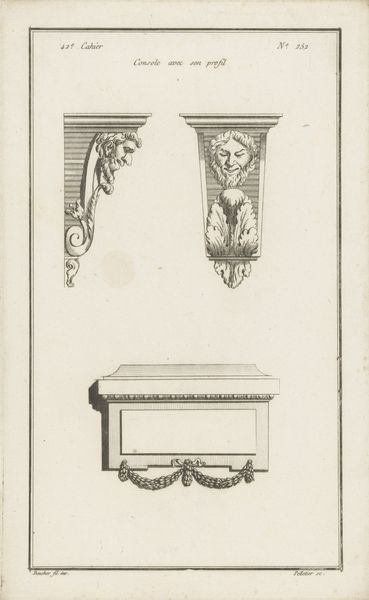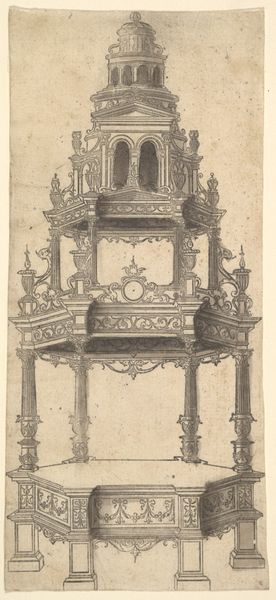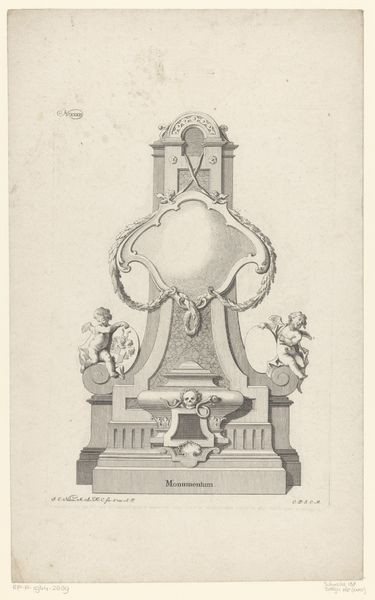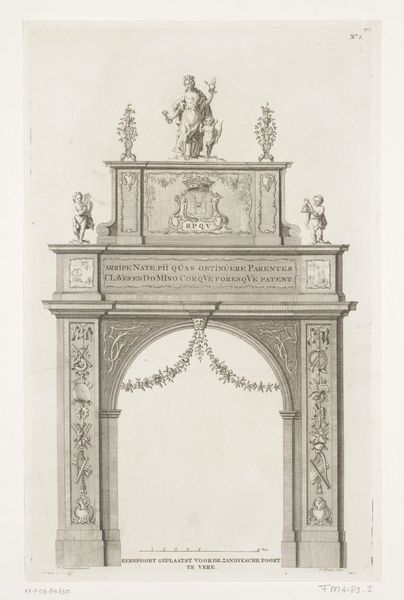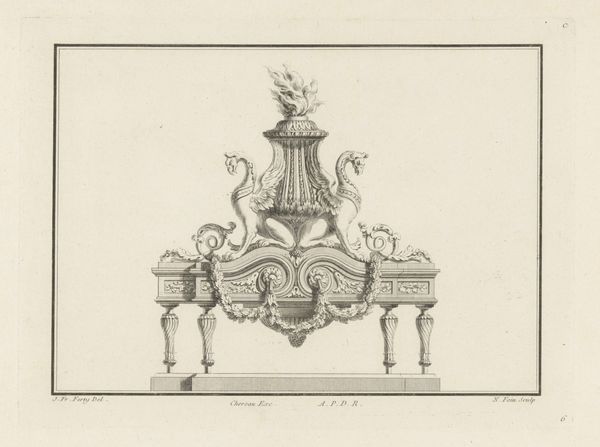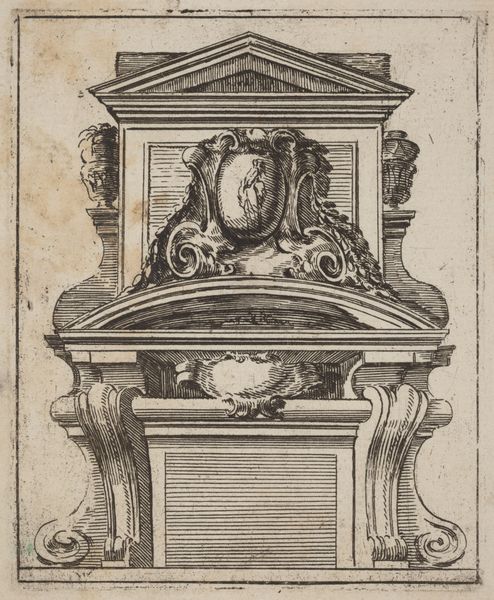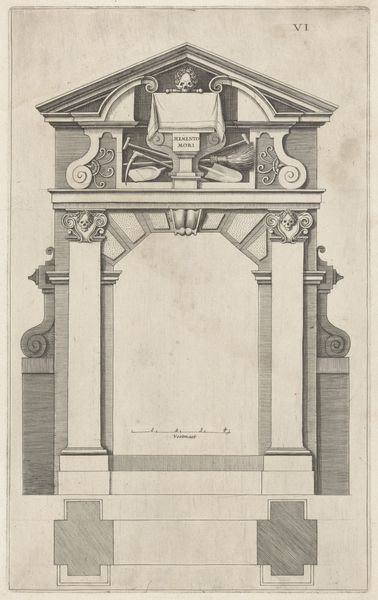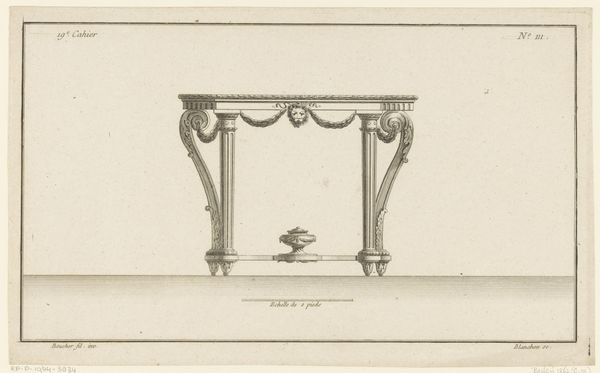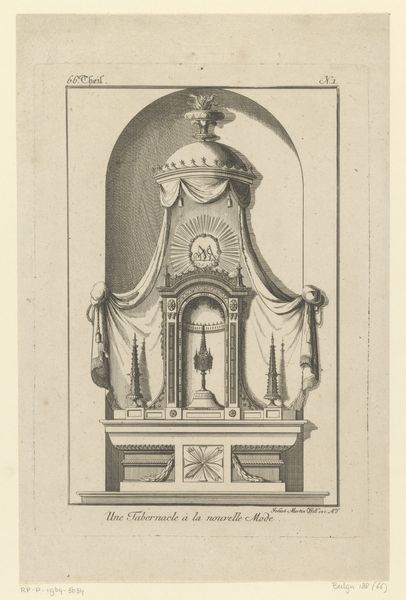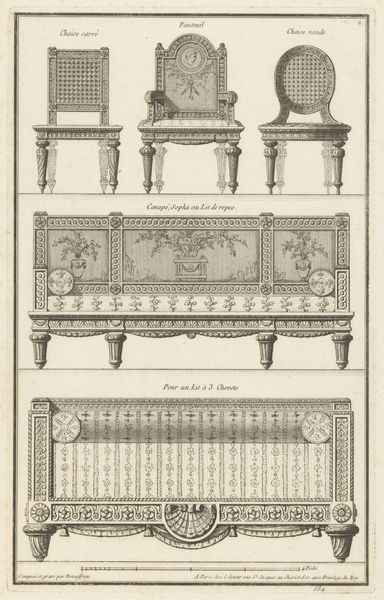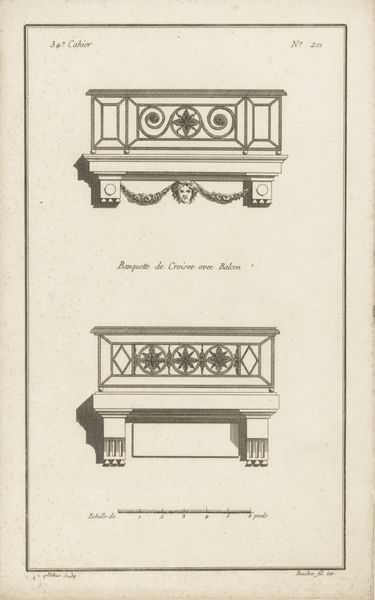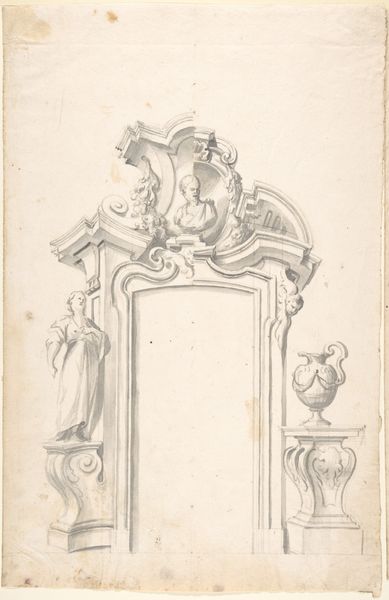
drawing, print, engraving
#
drawing
#
table
#
neoclacissism
# print
#
form
#
engraving
Dimensions: height 316 mm, width 194 mm
Copyright: Rijks Museum: Open Domain
Curator: This print from around 1784-1785, titled "Rechthoekige tafel," depicts a rectangular table in meticulous detail, the work of Augustin Foin. I find the Neoclassical devotion to symmetry so soothing here. What strikes you first? Editor: The sheer quantity of labor encoded in every line, curl, and embellishment. I mean, look at the way the legs curve up— it is evident someone spent a great deal of time designing this thing, planning the production process, the types of materials. It makes you wonder who was involved in realizing it in physical form. Curator: Indeed. And within that realization, we can also see a desire to evoke classical ideals, those fluted columns turned table legs almost religiously referencing ancient Greece, promising an association with power, wisdom and stability. What of those associations remain when its applied to domestic furniture design? Editor: The columns point toward that transfer of status through skilled creation and then purchase by specific classes. Neoclassicism democratized ancient aesthetic forms by mass consumption, shifting what symbols become culturally available to whom through decorative and domestic items. But back to craft, notice how Foin detailed the garlands, friezes, and medallions to show off elite taste? It seems to demand a high skill of both designers and fabricators. Curator: Exactly, the symbolic language of the era given form via careful craft. And how the objects arrayed on the tabletop - the urn, the frame, the bowl of flowers- these accessories perform as a tableau of gentility. These signifiers and their associations helped solidify a certain social order at the time, perhaps with an overt, declarative insistence. Editor: It is also remarkable what choices designers like Foin made regarding surface, in the process of trying to transfer wealth. An engraver is creating something to act as a proxy object, and what would seem important in such a rendering? The process and materiality seem ever so far from a finished, gilt-laden reality! Curator: A wonderful point. It's as if the print becomes a symbol of the table, standing in for the real thing. Looking at the broader sweep of history, I would say we are looking at much more than “just a table.” Editor: Precisely. Through this design, this labor, these signs are legible even centuries later and so available.
Comments
No comments
Be the first to comment and join the conversation on the ultimate creative platform.
